What Is A Tokyo Rig For Bass Fishing?
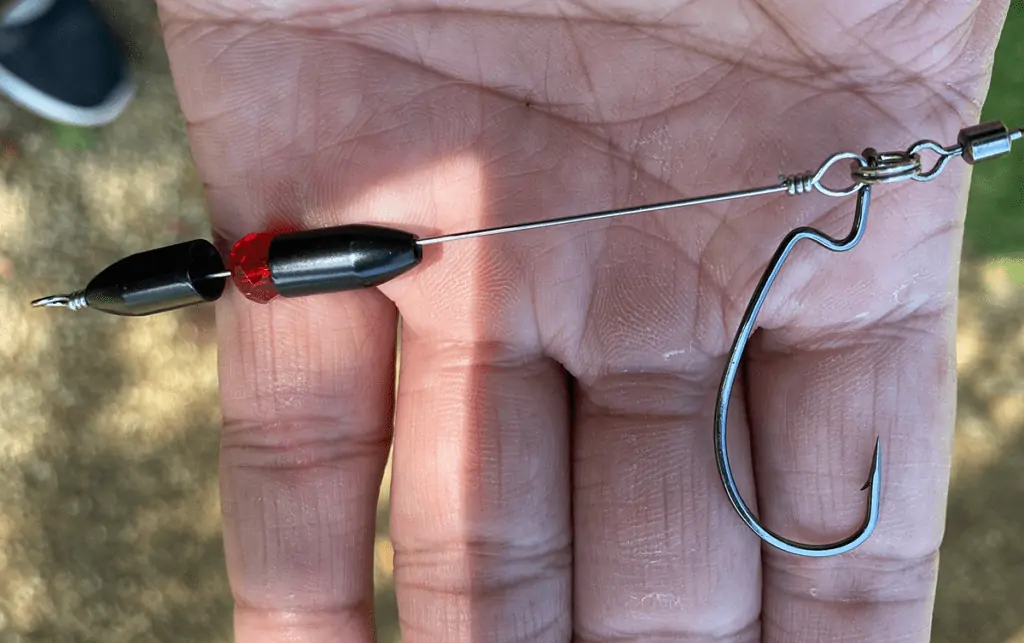
The RTW team has been fishing a lot lately. It doesn’t take much trip planning as our camping or hiking trips.
We’re lucky enough to have three community parks in our area, all within a 10-15 minute drive from home.
We decided to test out a rig that not too many beginner anglers know about called the Tokyo rig.
As the name implies, this rig setup originated in Japan.
And at first glance, it’s very similar to a drop shot rig but with a few features that make it unique.
We successfully fished this rig over the weekend (pictures below!)
And we’ll go over the pros and cons of this rig and some tips that will help maximize your chances of catching bass.
Let’s begin.
Tokyo Rig Information
This rig can be purchased already made, but you can also make them yourselves. The rig itself has a few different components, such as:
- hook
- barrel swivel
- split ring
- steel wire
- bullet weight
One end of the swivel has a split ring that connects the hook and the steel wire, and the other end of the swivel is where you’ll tie your main line. The other end of the steel wire is where you’ll attach your bullet weight.
Depending on the manufacturer of the prepackaged Tokyo rigs, the steel wire can come in different lengths. Some will also include weights and glass beads, and some will have a straight wire for you to add your own weights.
Fishing A Tokyo Rig
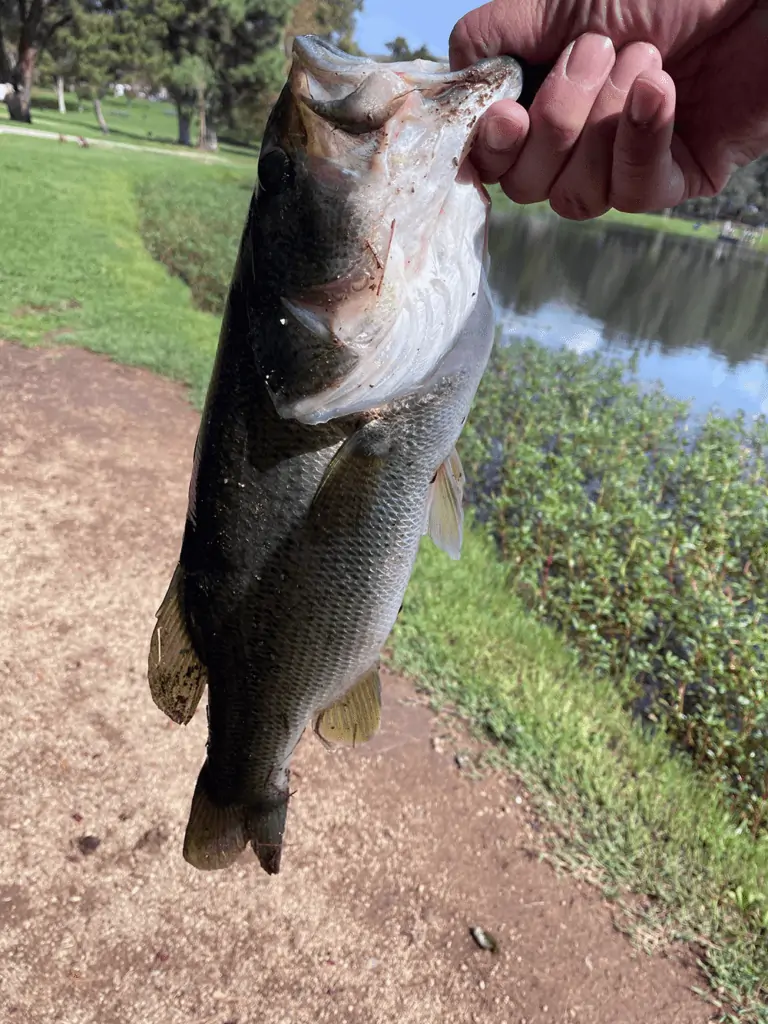
From our experience, fishing a Tokyo rig over a drop shot allows your swimbait to dance more freely.
Why? because the hook isn’t directly tied to the line, the split ring allows the bait to move unrestricted from the weight, allowing your bait to flail around more naturally.
Another benefit is that it takes your swimbait down to the bottom faster in deeper water, especially when fishing in current.
And when you’re fishing a community lake where the bass have seen it all. Sometimes all it takes is a different presentation that the bass has never seen before to get that reaction bite out of them.
What Swimbait To Use For Bass Fishing With This Rig
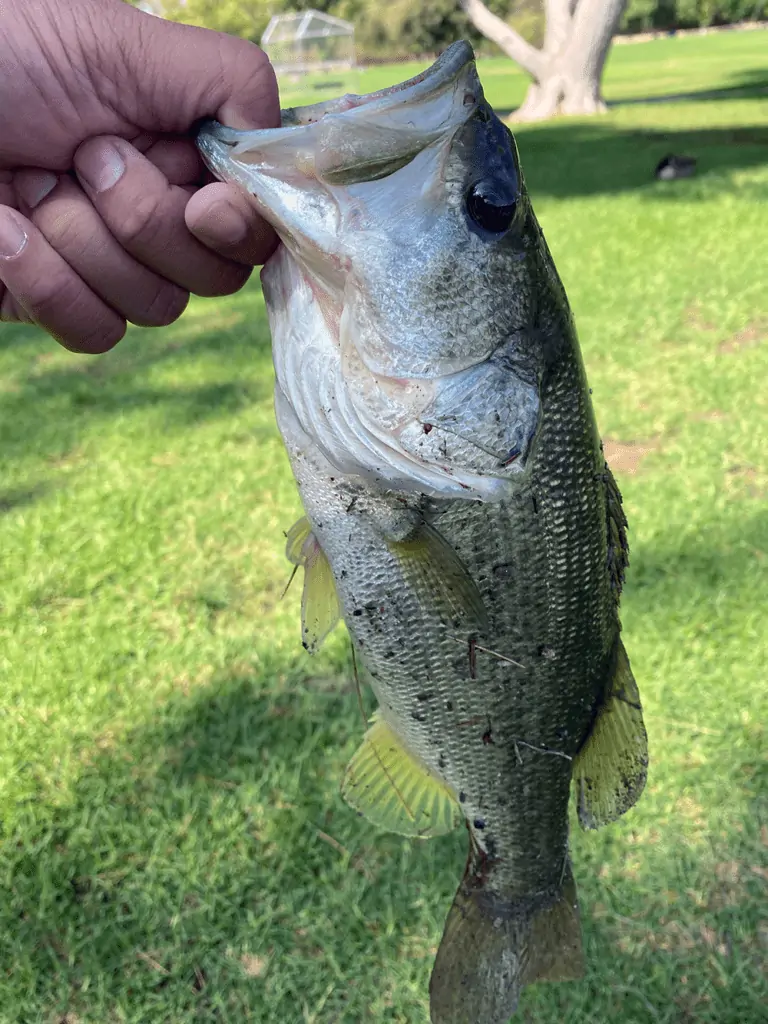
Aside from the unique presentation, it’s also a versatile rig in terms of the types of plastics you can use, even a swimbait.
You can use any soft plastic baits for this rig. There are no rules here. A few common baits are:
- straight tail worm
- curly tail worm
- crawfish
- creature bait
- paddle tail grub or other swimbaits
- etc
There are no rules here when it comes to which baits work the best. Experiment with different lure sizes and shapes.
You can also rig the bait weedless via Texas rig style when fishing in thick grass and underwater structure. It can be used in shallow water or add it to your arsenal in deeper water for summer bass fishing.
That’s the beauty of this rig.
What Are The Best Tokyo Rig Baits?
Strictly our opinion here.
But we feel the best baits for this rig are floating soft plastics. The look of a floating swimbait looks great as we bounce it along the bottom.
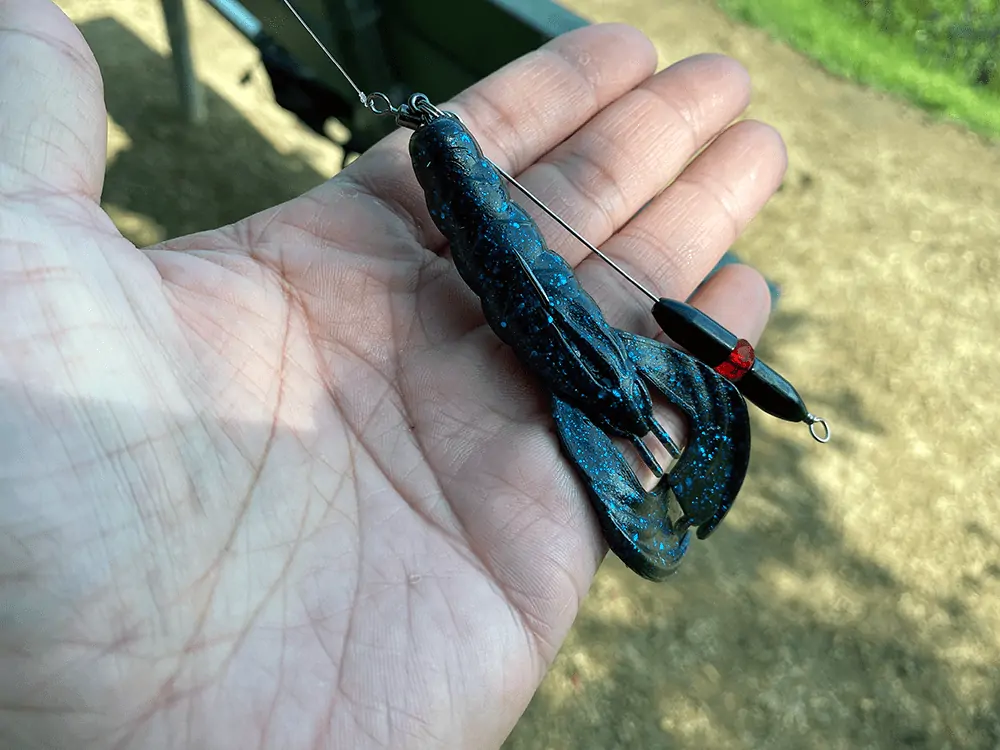
Here we used a crawdad from Zman, and the claws float in the water. The action of this bait looks so life-like as if the crawdad is jolting away from danger.
Weight
Bullet weights are typically used with this rig; some will use two bullet weights, as shown in our pictures, to help minimize snagging during retrieval. If you decide to make your own, you can use any size weight that you want. We suggest using the lightest weight possible that you can get away with, but the common weights that you should use from our experience are:
- 1/4 oz
- 1/8 oz
If you plan to use two bullet weights and a glass bead in the middle, use two 1/8oz weights if you use 1/4 oz in total.
If you’re fishing in heavy mats, adding two 1/2oz weight on a heavy-duty rod will convert this rig into a punch rig.
The Retrieval
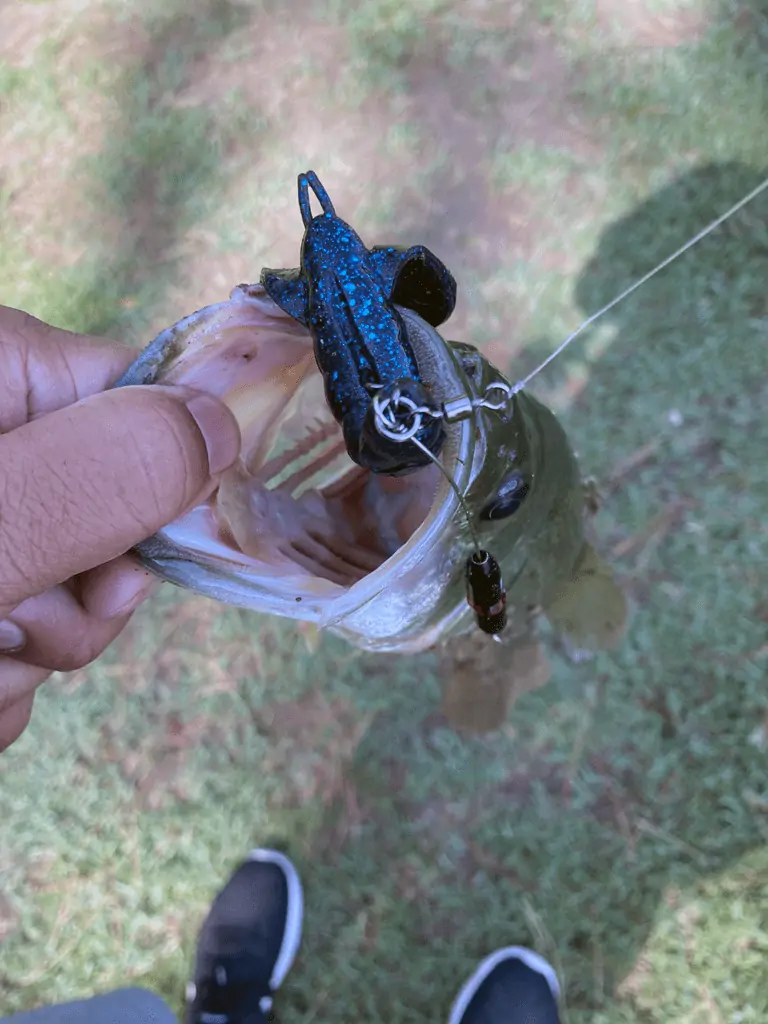
There are many ways to retrieve this rig, and there isn’t one way that’s better than the other. So we suggest experimenting with all the retrieves to see what the bass are reacting to the best.
Here are some of the retrieves you can try out for yourself.
Slow Roll: slowly reel in your bait off the bottom at a constant speed, occasionally pause after a few seconds and continue to reel in at the same pace. This rig is also a fantastic tool for deep-water swimbaits.
Count The Rocks Method: This method gently bounces your bait off the ground as if you’re trying to count how many rocks your bait is hitting as you slowly reel in your bait.
Frantic Bounce: This method mimics your bait trying to escape prey. Let your bait sink to the bottom, then quickly tap your rod tip to let the bait look like it’s fleeing. Follow it up with a quick double twitch, then pause for 3-4 seconds. Reel in your slack and repeat the process.
As you’re retrieval, you want to make sure you control your slack. You want to ensure you have a little slack in your line before your twitches. This will allow your bait to jolt up quicker as if it’s frantic.
As for the slow roll method, whatever you think is a slow retrieve… Go slower than that.
DIY Tokyo Rig Guide: What You Need To Make Your Own
Making your own Tokyo fishing rig is super easy. With a few tools, you can customize your rig however you want from:
- the hook size
- the weight size
- the wire length
You only need quality split rings and a split ring plier to attach the wire and hook to the swivel easily.
You want to make sure you get a split ring big enough so that it doesn’t restrict the movement of the hook when attached. So we suggest getting at least a size of 3mm for the split ring.
You can find loop wires on Amazon in 6″ lengths for your build; a diameter of around .035 inches is recommended. Before attaching your bullet weight, you can cut the wire length to your desired length.
When inserting your bullet weight into the wire, make sure you insert the base of the weight in first. If you’re using two bullet weights, the cone tips should face opposite sides.
Then, get some pliers and then the wire 90 degrees to lock the weights in place.
That’s it!
Pros
After fishing this rig last week, we feel it will forever have a spot in our tackle box. Here are some of the things we like about it:
- Versatility: You can add a creature/craw bait and bounce it off the bottom, or add a paddle tail grub and fish it like a swimbait.
- Less Tangle: After reeling in your bass, it doesn’t look mangled up like a regular drop shot rig.
- Weedless: Texas rig your bait up for a weedless presentation.
- Free Motion: Because the hook isn’t directly tied, the bait moves around more naturally
Cons
Our only gripe about this rig is that it has a lot of hardware. This is where we can see a drop shot rig might be better in terms of the bass not being able to see everything that’s dangling around the bait.
But this is such a small negative, but it’s still something that others have mentioned as well.
The Jika Rig
We can’t talk about the Tokyo rig without mentioning the Jika rig. The Jika rig is said to be the predecessor to the Tokyo rig.
The biggest difference between the two rigs is that the Jika rig uses a fixed weight instead of a bullet weight. This gives the bait a more horizontal presentation in the water. And the weight is attached directly to the split ring.
Besides that, you can still use this rig in many ways as the Tokyo rig.
Final Thoughts
We hope you learned a thing or two about this rig. On our first day of testing it, we caught two bass in a span of an hour when nothing else was hitting.
The Tokyo rig is versatile and can be used in many different ways. We suggest having a few of these on your next fishing trip.
As always, please practice CPR ( catch, photo, release) if you don’t intend to eat any fish you catch to preserve this sport for our kids.






